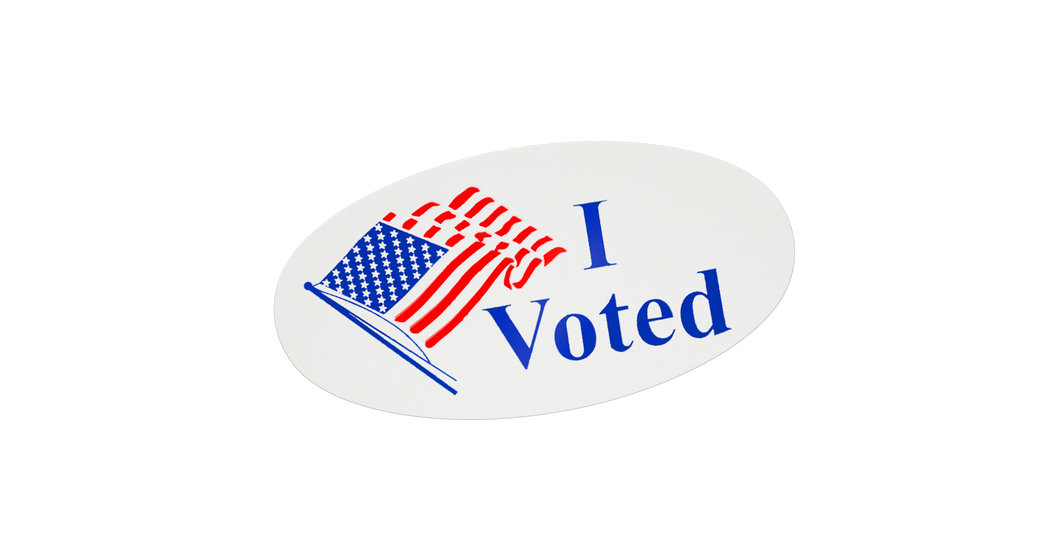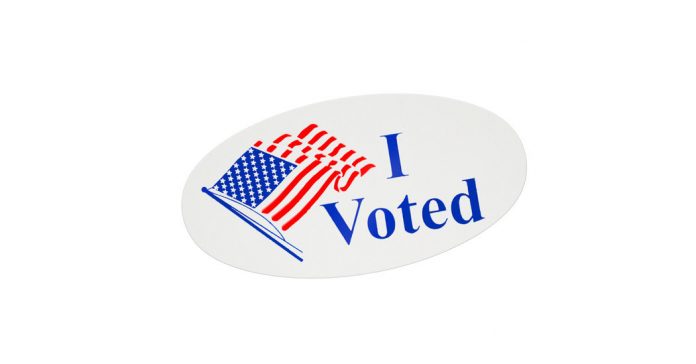
Yesterday was another mid-pandemic primary night, and early signs are that it went pretty well. It’s Wednesday, and this is your politics tip sheet. Sign up here to get On Politics in your inbox every weekday.
Where things stand
-
Several states held primary elections yesterday, and despite worries about timely vote-counting during the pandemic, a surprising number of races were called.
-
Kris Kobach was upended in his G.O.P. Kansas Senate race, and Cori Bush scored a stunning upset for progressives in her Missouri House primary.
-
Still, by the end of the night, final results in several contests, including Representative Rashida Tlaib’s in Michigan, hadn’t yet arrived. It’s a familiar Tuesday night scene by now, as states across the country have confronted the vagaries of voting during a pandemic. And it’s one we should think about getting used to, as we look ahead to a November general election that will probably be plagued by many of the same problems and delays.
-
With President Trump stepping up his attacks on mail-in voting, some voting-rights activists worried that the appearance of any volatility in the process could feed into the argument that absentee voting is dangerous and unreliable — no matter how unfounded those claims are.
-
This week Trump pointed to the lack of final numbers from some of New York’s primary elections as evidence that expanding absentee balloting was a bad idea. He even threatened to take executive action to stop the broader use of mail-in ballots nationwide, though he did not say how he would justify overriding state laws to do so.
-
(Results did finally come in yesterday from a couple of those New York primaries, which had taken place back in June. In one especially closely watched contest, Ritchie Torres, 32, a progressive city councilman, emerged victorious from a field of 12 candidates vying for the Democratic nod in the 15th Congressional District.)
-
But officials in most of yesterday’s voting states — which included Michigan, Arizona, Kansas and Missouri — reported relatively smooth operations. In Michigan, more than 1.6 million people had cast mail-in ballots by Tuesday evening, election officials said.
-
Voting-rights advocates in Detroit reported some poll-worker shortages, closed polling places and missing absentee ballots. But over all, the kinds of widespread meltdowns that bedeviled primaries this year in states like Wisconsin and Georgia did not materialize yesterday.
-
Many of the day’s primary elections pitted progressive and right-wing candidates against more moderate, establishment-backed figures in both parties.
-
In Michigan’s 13th Congressional District, Tlaib — one of the four left-wing congresswomen known as the Squad — was facing a tough re-election battle against the more centrist Brenda Jones, the president of the Detroit City Council. Tlaib narrowly defeated Jones two years ago, when she was first elected to Congress. As of early this morning, most precincts still hadn’t reported full results.
-
In St. Louis, Bush, a progressive backed by the Justice Democrats, toppled a Democratic stalwart, Representative William Lacy Clay. Bush, a nurse, was running for the second time to unseat Lacy Clay, who has been in Congress since 2001, when he succeeded his father, who had first been elected to the House in 1968.
-
In Kansas, Kobach, a polarizing former state secretary of state and a staunch Trump ally, was beaten by Representative Roger Marshall, a conservative congressman from western Kansas, whom many establishment Republicans had supported, judging him to be the stronger candidate to win in November.
-
In Arizona’s most populous county, Maricopa, another divisive Trump ally — Joe Arpaio, 88, who instituted harsh, anti-immigrant policies in his nearly quarter-century career as sheriff — was vying for a chance to win back his old job in November. No winner has been called yet, and from the initial returns last night, it was looking like a nail-biter.
-
Apparently there’s at least one state in which Trump thinks mail-in voting is a fine idea: Florida. “Florida’s Voting system has been cleaned up (we defeated Democrats attempts at change), so in Florida I encourage all to request a Ballot & Vote by Mail,” he tweeted yesterday afternoon.
-
Florida happens to be full of older white voters — who have historically tended to vote Republican, and who may have a particular interest in absentee voting during a pandemic that especially threatens them — and it’s widely seen as critical to a Trump victory in November.
-
It’s also the state in which Trump himself now votes, since he officially became a Florida resident last year. Trump has personally voted by mail multiple times.
-
Oh, and there’s one more reason he apparently feels comfortable letting Florida proceed with widespread mail-in balloting. “Florida’s got a great Republican governor,” he said yesterday at a White House news conference, when asked to explain why he supported voting by mail there specifically. “Florida’s a very well-run state.”
-
Earlier this year, the Census Bureau said it would need more time than usual to complete this year’s count of the country’s roughly 330 million residents. But now it’s taking that back, saying that it will shave four weeks off its planned schedule.
-
Census experts said the change would make it considerably harder for the bureau to collect an accurate tally of the population, and four former directors of the Census Bureau issued a statement yesterday arguing that the administration should restore the lost weeks.
-
The directors — who served under both Democratic and Republican administrations — warned that a shorter timeline “will result in seriously incomplete enumerations in many areas across our country.”
-
Immigrants, racial minorities and young people tend to be some of the hardest-to-reach demographics when conducting a census. Shortening the collection period can deny census-takers the opportunity to make a critical last attempt to reach these groups, exacerbating the self-selection bias that may lead to their underrepresentation in official statistics.
-
An attempt by the Trump administration to block legally documented immigrants from using public services like food stamps, housing vouchers and Medicaid has been thwarted — at least for now.
-
An appeals court in New York yesterday blocked the administration’s efforts to deny permanent residency to legal immigrants if they use such services.
-
In a 114-page ruling affirming a lower court’s decision, the U.S. Court of Appeals for the Second Circuit said that the so-called public charge rule, introduced last year by the administration, amounted to a wealth test and could discourage residents from seeking medical care during the coronavirus pandemic.
-
Historically, only long-term institutionalizations or long-term monetary assistance counted against immigrants applying for green cards. Fewer than 1 percent of applicants have typically been disqualified on public-charge grounds.
Photo of the day
Election workers sorted through absentee ballots in Detroit.
Trump isn’t the only government executive struggling to confront the coronavirus.
By J. David Goodman
The abrupt resignation of New York City’s top public health official yesterday underscored the daunting challenges — and political disputes — that still face the nation’s largest city months after it was the epicenter of the pandemic.
While caseloads in New York are at manageable levels and the rate of new infections remains low, the city has nonetheless struggled, for example, to mount an effective contact tracing program.
The city’s difficulties are emblematic of the issues numerous state and local governments have experienced as they seek to contain the virus without a comprehensive national framework from the Trump administration on things like testing and tracing.
In New York, simply starting up the tracing program — a vast public health apparatus with thousands of new hires — was a gargantuan task. And the tracers, many of them new to the job, faced various challenges, including language barriers, people without reachable phone numbers and suspicious responses on the other end of the phone. New hires reported weeks of chaotic scenes at the program’s start.
Contact tracers have been able to reach most of the people who test positive for the coronavirus, according to city data, but fewer than half have agreed to share the contact information for people they may have exposed.
And the program began amid behind-the-scenes political strife: Mayor Bill de Blasio decided to locate the contact tracing program outside the city’s health department, which had traditionally performed that role. That decision led to a clash with the health department and, ultimately, the resignation yesterday of its commissioner, Dr. Oxiris Barbot.
Now the city is facing another major challenge: how to open schools safely in September. De Blasio announced a plan on Friday under which many schools could close again if as many as two students or staff members from different parts of the school tested positive.
But that cautious approach has not stopped some teachers from vocally opposing the reopening. A large group of teachers gathered near City Hall on Monday to protest the mayor’s plan. The teachers’ union has also raised concerns.
Andrew Cuomo, the governor of New York, has said in news conferences that the city’s plans were not yet fully formed and that parents might decide to stay away.
“The concepts are not enough,” he said on Sunday. “Where is the personnel? Where is the equipment? How are you going to do this?”
On Politics is also available as a newsletter. Sign up here to get it delivered to your inbox.
Is there anything you think we’re missing? Anything you want to see more of? We’d love to hear from you. Email us at [email protected].
The post Mail Voting’s Latest Test appeared first on New York Times.







